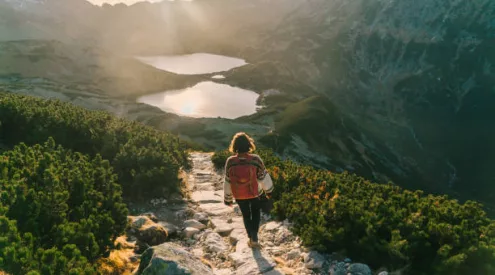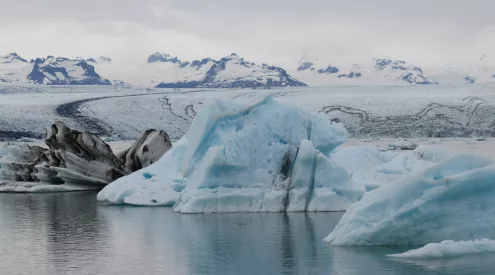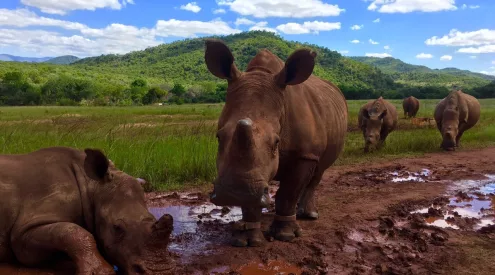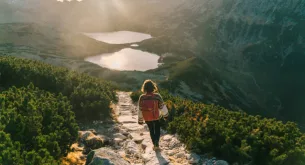I think I have found what I’m looking for. Mkhambathi Nature Reserve in the Eastern Cape is one of the most photogenic, pristine and priceless places I have been to on my Year in the Wild. There is so much to admire about this relatively small 7000 hectare reserve on the northern Wild Coast of South Africa. Excuse all the superlatives which you’ll come across in this blog, but this place deserves them.
The reserve runs along spectacular coastline, where calm inlets offer respite from the huge crashing waves indicative of the Wild Coast. Emerald grasslands roll down to the shores, and are dotted with eland and hartebeest, which you’ll often see against the blue backdrop of the Indian Ocean.
Pockets of thick coastal forest echo with Knysna loeries, while shy kudu antelope hide away in the blanket of greenness. The most extensive forest lies in the north-west of the reserve, in an area known as “The Superbowl”. Here, a massive amphitheatre of sandstone cliffs surrounds several hectares of luminous high-canopy forest. In the middle of the crescent of cliffs, a river cascades thirty metres down on its way into the gorge below. You can stand on the edge of the cliffs, listening to the crash of water, and hundreds of birds tweeting, looking down at a scene that is simply breathtaking.

Mkhambathi Falls … my favourite
The main three rivers from south to north – Msikaba, Mkhambathi and Mtentu – cut deep gorges through the sandstone bed rock. Two sizeable vulture colonies thrive in the cliff faces of the Msikaba and Mtentu gorges. All the rivers and streams in the reserve are crystal clear, and most of the Mkhambathi River’s catchment area falls within the reserve. You can drink straight from the streams and waterfalls, of which there are several. How many places in South Africa – in the world – can you do that these days?
In fact, it’s the waterfalls which make Mkhambathi extra special. Within the space of a few hundred metres, the Mkhambathi river tumbles down several precipices into deep, dark rock pools, some close to a hundred metres in size. I have spent several hours admiring and photographing Horseshoe Falls, Strandloper Falls and Mkhambathi Falls. The last cascades directly into the ocean, a remarkable setting and climax to what is a spectacularly scenic reserve.
Schools of fish move up and down the estuaries and rivers. Fishing here is controlled, and the Pondoland Marine Protected Area has done much to conserve the abundant marine life. But there’s still much to be done. Enforcement is difficult. Some fishermen in the area confided that they had fished in areas where it was illegal.
But it’s still a largely untouched place, a place which could almost be described in Utopian terms. It is probably what most of the east coast of South Africa once looked like a few hundred years ago: plenty of wildlife sharing their space with cattle, while locals lived a life deeply connected to the rhythms of nature, pastoralists and fishermen living off the land and sea, wanting for nothing, yet receiving everything they needed- all the food, water and health they required. A benign climate means you will never have to put on a jersey, and swimming in the warm rivers and sea at any time of day or night is considered totally appropriate and without worry of getting cold.
Incredibly, this place used to be a leper colony until the mid 20th century. What a place to be sent to…if you’re going to have leprosy, then Mkhambathi is the place to have it. The name comes from the local term for leprosy…but its exact origin is not entirely understood or known.
But like all of South Africa’s most beautiful and pristine areas, Mkhambathi is under threat. The curse of unchecked capitalism, commerce and development is lurking. For several years, the Pondo people and organisations like Sustaining the Wild Coast and Wild Coast Project have been fighting mining companies which want to strip the sands and soils of its titanium. However, the Pondoland community, under leadership of their king Mpondombini Sigcawu, has forbidden any mining.
I spent the weekend with local environmental activist and educator Nonhle Mbuthuma while she was conducting a workshop for local kids at Mtentu, on the northern border of the reserve. She told me that the local people don’t see how mining can benefit their community, as the mining will only destroy the rivers which the locals use for drinking water, and eliminate the grasslands, which their cattle graze.
Besides, the mine will completely ruin the aesthetic value of the area, and will only last for twenty-odd years. All the jobs that are created will be for outsiders, and most of the money will end up in the bank accounts of a few individuals. “What are we supposed to do once the mine has destroyed our land?” Nonhle told me. And the income generated from nature tourism to this beautiful area of South Africa would – like the beautiful rivers – dry up immediately.
Another threat – more insidious – is the N2 national road, which government wants to extend through this part of the Wild Coast. It would not only ruin the incomparable natural beauty, but as Nonhle told me, its expensive funding could come from foreign companies who in return want access to the mining rights in the area.
I’ve seen the effects that highways have on natural systems – from Addo Elephant National Park to Garden Route National Park. Not only do they mess up natural ecosystems, but they create massive ribbon development, which eventually destroys the spirit and soul of a place, the very things which make tourists come to the area in the first place.
Besides, locals have told me that the government wants a toll road to be built because they say it will improve access for the community, but the government hasn’t committed any funding to build decent roads from the toll road into the communities themselves. The roads in this region are terrible – why not improve existing infrastructure, and still preserve the soul of the Wild Coast?
There’s no doubt that Mkhambathi Nature Reserve and its marine protected area could be one of South Africa’s flagship reserves, taking its place alongside the likes of Table Mountain National Park and Kruger National Park as one of the most beautiful and special. For a tiny reserve, this is no small feat, yet – incredibly – its long term safety and preservation is uncertain. I challenge anyone to come to Mkhambathi and to tell me that South Africa’s authorities should not do everything to conserve it and its surrounding areas.
Now, what would I do if government gave the go-ahead to the mines near Mkhambathi? Just thinking about it makes my blood boil and my heart break. Some will no doubt say that I’m being sentimental and “green”, but again, I ask you, come to Mkhambathi and see for yourself. Then decide.

Strandloper falls at Mkhambathi Nature Reserve
Important note to travellers and visitors
Mkhambathi may be one of the most beautiful places I’ve been to, but if you come here, be prepared for some travel challenges.
The roads in this part of the Eastern Cape are shocking (who knows what politics is being played out, especially in light of the N2 toll road project). The roads in the reserve are also terrible – if you don’t have a bakkie or high-ground clearance vehicle, don’t bother coming. Reserve manager Vuyani Mapiya tells me that Eastern Cape Parks & Tourism have been trying to get the roads fixed for several years, but the relevant provincial minister has not yet signed off the funds, which are apparently available. I do think the roads are a major issue for visitors, but then again, I don’t really mind, because I quite like it when there aren’t many people around, and I have a 4×4!
Seriously, however, if Eastern Cape Parks & Tourism want to play their part in developing this region sustainably, then they do have to get the roads fixed, whatever it takes. Plus, they need to make sure that the hot water gas geysers work in the chalets, that the toilets flush, that the chairs aren’t broken, that there is at least some cutlery in the kitchen, and that the staff are trained in tourism. I do get the feeling that visitors here are very welcome, but that staff aren’t quite sure what to do with them when they arrive! If the proposed mining is to be stopped once and for all, Mkhambathi needs to play its part and show that it can generate sustainable, nature-friendly revenue. The area sells itself as a nature-loving destination, but the tourism basics must be done correctly if the reserve is to be taken seriously.
For more, go to www.yearinthewild.com and www.facebook.com/yearinthewild. Thanks again to my sponsors for making it all possible. CapeNature, South African National Parks, Ezemvelo KZN Wildlife, Eastern Cape Parks, iSimangaliso Wetland Park, Ford, Total, Evosat, Conqueror Trailers, Vodacom, Digicape, Lacie, Frontrunner, Safari Centre Cape Town, K-Way, EeziAwn, National Luna, Nokia , Garmin, Goodyear, Global Fleet Sales, Hetzner, Clearstream Consulting, Escape Gear and Trailcam Adventures.


















